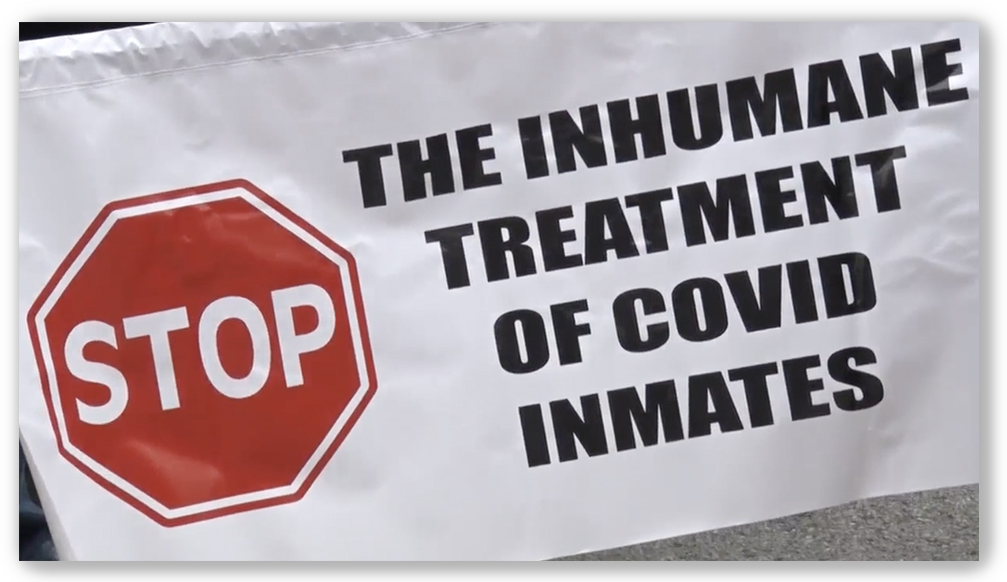We post news and comment on federal criminal justice issues, focused primarily on trial and post-conviction matters, legislative initiatives, and sentencing issues.

MIRABILE DICTU
 That is, “speaking of wonders…”
That is, “speaking of wonders…”
Medicine has not seen such an achievement in two millenia: between last Wednesday and Thursday, the BOP cured almost 1,968 inmates of COVID. COVID numbers, totaling 7,787 sick prisoners on January 28 had dropped to 5,581 as of last night.
Of course, if this were a real medical miracle, you’d expect the number of institutions with COVID to fall, and staff cases to decline as well. No such luck. Staff with COVID increase 152 to 2,057, and the number of institutions with outbreaks total 131. As of last weekend, Oakdale II has 397 cases, Yazoo City USP 277, FCC Lompoc has 223, and Oakdale I has 214. Twelve more locations have more than 100 sick, and 14 more have over 50. A full 86 prisons have 10 or more inmate COVID cases.
While the BOP does report daily infection tallies for each of its facilities, experts say those counts likely miss a large number of infections. Stat said the BOP does not report granular enough testing data to calculate so-called test positivity rates, a measure often used in public health to estimate what percentage of a population likely has Covid-19, given not every person in a community is typically tested at one time.
 What’s more, the BOP’s declaring inmates “recovered” from COVID has by now become a sad joke. Of the 53 BOP inmates who have died from COVID since March 1 of last year, the BOP had previously declared 53% to be “recovered.” Epidemiologist Homer Venters, M.D., has cautioned against the very questionable BOP practice:
What’s more, the BOP’s declaring inmates “recovered” from COVID has by now become a sad joke. Of the 53 BOP inmates who have died from COVID since March 1 of last year, the BOP had previously declared 53% to be “recovered.” Epidemiologist Homer Venters, M.D., has cautioned against the very questionable BOP practice:
People that tested positive, let’s say three, four weeks ago, may be considered recovered or not part of active cases…When you kind of wave a wand over people and say they’re recovered, my experience going into jails and prisons is many of them are not actually recovered. Many of them have new shortness of breath, chest pain, ringing in the ears, headaches. Other very serious symptoms.
The problem is systemic. “On his first day in office, President Biden promised to order the BOP to reevaluate its Covid-19 protocols and release additional data on the spread of the virus in prisons. But that specific order never came,” Stat said last week. “And now, as Covid-19 is spiking in multiple federal prisons around the country, spurred by the Omicron variant and still-substandard infection control, advocates say that the BOP’s Covid-19 protocols are as broken as ever.”
Stat said that at Danbury, “it’s not just Omicron driving the surge. There were 234 new cases in a population of roughly 1,000 people during the month of January, according to data compiled by a team at the University of Iowa, but there’s no frequent testing and those in quarantine aren’t being monitored for worsening symptoms.”
 And at Alderson, Stat quoted an attorney for inmates at FPC Alderson as saying the situation there is worse, although there’s even less information accessible. Available data suggest that Alderson experienced serious spikes in new Covid-19 cases during both late December and late January. The lawyer said there are likely more women with COVID in the facility than the available data show, because the facility is not testing widely.
And at Alderson, Stat quoted an attorney for inmates at FPC Alderson as saying the situation there is worse, although there’s even less information accessible. Available data suggest that Alderson experienced serious spikes in new Covid-19 cases during both late December and late January. The lawyer said there are likely more women with COVID in the facility than the available data show, because the facility is not testing widely.
The Fort Worth Star-Telegram was blunt: “Two years into the pandemic, federal prisons — including one in Fort Worth — still do not have COVID-19 under control. Executive staff at federal prisons are failing to follow the Bureau of Prisons’ COVID-19 response plan, according to a federal report. FMC Carswell, a women’s medical prison in Fort Worth, does not have a facility-specific plan, employee union representatives said… ‘It’s been pure chaos,” [one inmate,] who is incarcerated at the prison, said. “Carswell is still without a plan.”
Jennifer Howard, president of the union representing more than 400 FMC Carswell employees, said executive staff leaves union representatives out of the loop on COVID-19 discussions and safety plans. During the most recent meeting between union representatives and Carswell executive staff, Howard said, an executive staff member told reps, “I wish we could tell you we had a plan right now.”
Stat, Despite Biden’s big promises and a far better understanding of the virus, Covid-19 is still raging through the nation’s prisons (February 2, 2022)
Fort Worth Star-Telegram, Cases spike at Fort Worth prison; whistleblower complaint says top staff have no COVID plan (January 31, 2022)
KXAS-TV, Seagoville Federal Prison COVID-Cases Fall Drastically, Expert Warns Against New Data as Family Mourns Loss (August 14, 2020)
– Thomas L. Root











